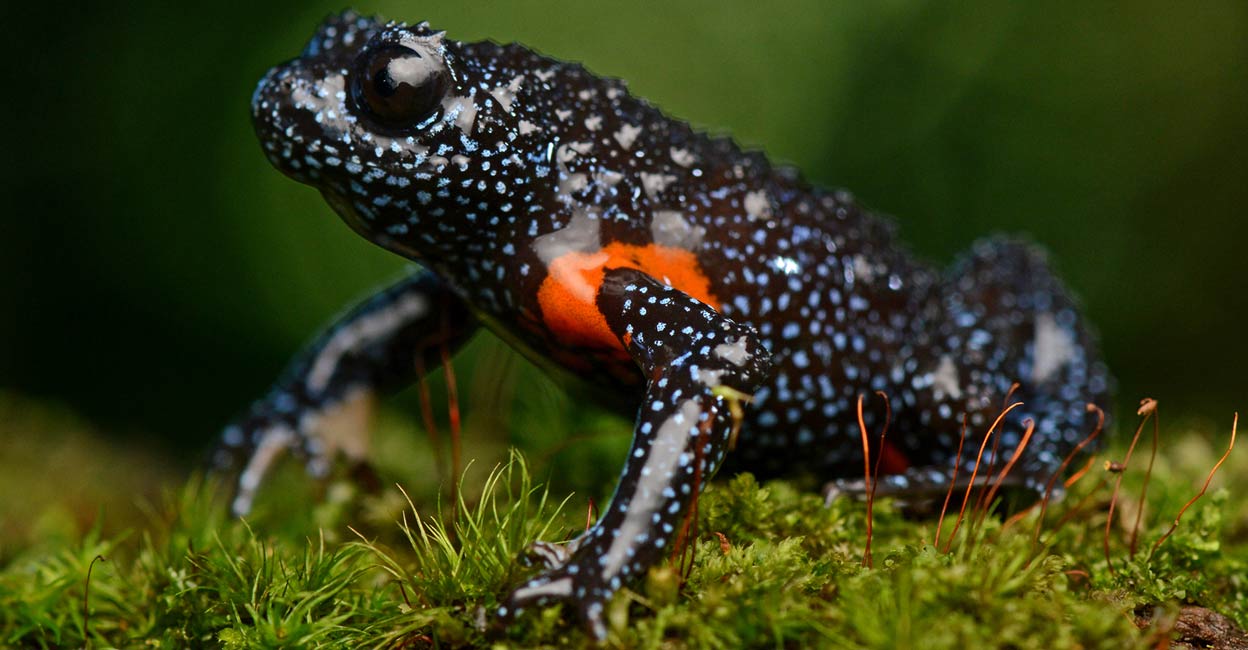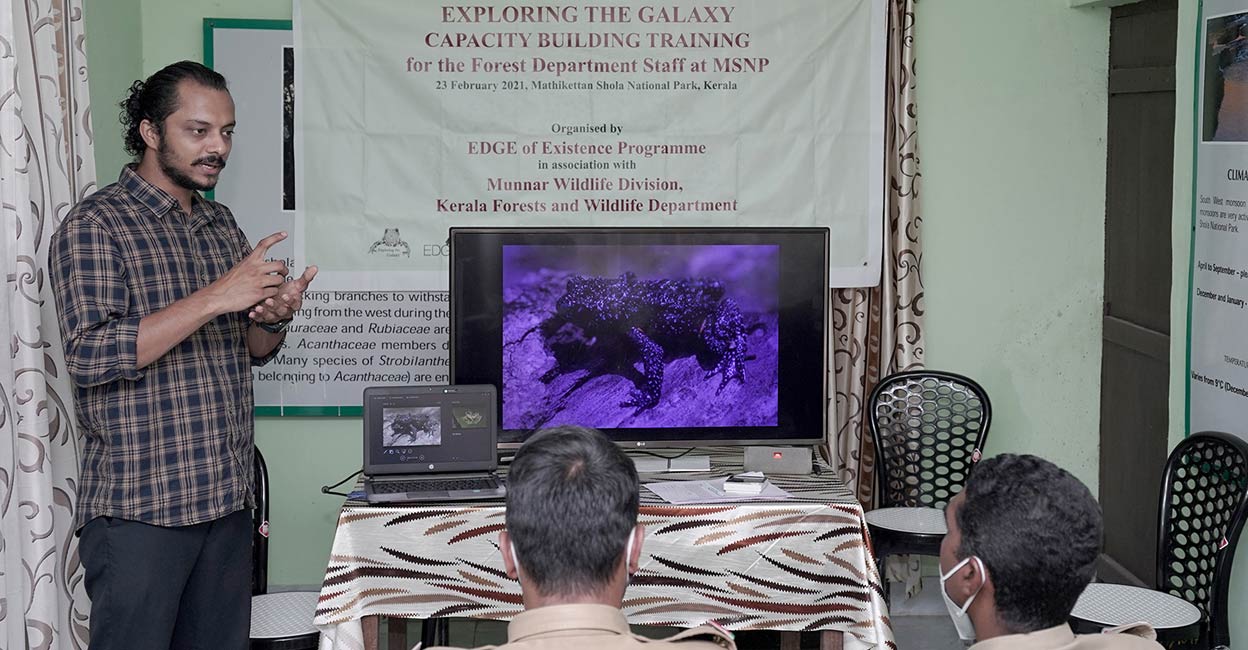Galaxy Frog: The flagship species in Kerala that must be conserved

Mail This Article
There are many exotic and rare species of flora and fauna in the forests of Western Ghats. Many of these species like the lion-tailed macaque, Nilgiri tahr and many other endangered species are protected in the national parks of Kerala. Now, for the first time in the state, a frog which is endangered has been declared a flagship species.
Galaxy frog (Melanobatrachus indicus), which was first spotted in 1878, has been selected as a flagship species for conservation in Mathikettan Shola National Park in Idukki in early June this year. After 50 years, the species was again spotted from Valparai and later it was considered extinct and rediscovered from Kalakkad-Mundanthurai and Periyar Tigers Reserves in 1997. In 2004, it was again spotted from Mathikettan Shola National Park by Bhupathy and the team. Due to its limited distribution and degradation of its habitat, galaxy frogs are rarely spotted but it got the status of flagship species, thanks to Rajkumar KP, a Ph.D. scholar at Kerala Forest Research Institute (KFRI) and a research fellow under EDGE, who again found the frog during a field survey in 2019 from Mathikettan and Marayur. Though Rajkumar had spotted the frog in 2014 during a survey in Marayur, little did he know that the frog was rare and endangered. “It was after a conscious extensive search for this frog that I realised that it was very difficult to spot this which later led to my project work in 2019,” says Rajkumar.
Flagship species
Flagship species are those on the verge of extinction that need proper conservation in their particular habitat or geographic condition. These species could be facing habitat destruction or some major threats. The main objective involves attracting society's attention to why certain threatened species need to be conserved and that there is a need for awareness on biodiversity conservation. In order to improve its condition, a proper strategy has been devised to protect the species. This helps save such species as well as their habitat. Galaxy frog is only the second amphibian flagship species in the country and first for the state of Kerala.

“Protecting galaxy frogs will help protect several other species that form the ecological community of its habitat,” says Rajkumar.
Strikingly beautiful
Like its name, galaxy frog appears just like a galaxy of stars. Its striking blue and orange colour is very appealing and makes it one of the beautiful and rarest frogs. Endemic to the Western Ghats, this frog is just 2-3cm in size and therefore hard to spot it among the leaf litter, tree barks or moist areas. During Rajkumar's survey, the species was only recorded from under the rotting logs where the animals were inactive and motionless. “I have recorded a total of 12 individuals of galaxy frog during my project work though I had spotted a few more before and after the project. With the support from the Forest Department staff at the National Park, I had submitted a proposal for declaring the galaxy frog as the flagship species and got its status in June 2021,” says Rajkumar.
Since galaxy frog does not produce any calls, it makes it even difficult to spot, unlike other frogs. It also can't hear sounds. Though small in size and prone to threats, galaxy frog tries to avoid injuries by staying motionless keeping its limbs close to the body. But very few studies have been made to understand its behaviour, habitat and breeding.
Galaxy frogs have been so far spotted in Agasthyamala, Periyar, Annamalai, Mathikettan Shola, Eravikulam, Chinnar, Valparai, Marayur and the landscape is vast.

Potential threats
Its small size itself is a threat to the frog but they also face many other threats. Since they were mainly spotted from logs, collection of firewood by indigenous communities cause a major threat. In the recent past, the weather patterns too have changed drastically especially the rainfall pattern. “Sholas are being destroyed due to rainfall-induced landslides. This could affect the nearby streams. Since these frogs are found close to streams, this will be a major issue to its remaining population,” says Rajkumar. Fire accidents, human-induced disturbances too are threats to these tiny species.
Conservation activities
The entire shola system in Mathikettan will be preserved as part of the conservation of this flagship species. A team along with the Kerala Forest Department will study the rare species further and they have developed a 15-year management plan to preserve the national park.

Rajkumar has helped the department by imparting capacity-building training for the staff and few measures to protect galaxy frogs. Awareness campaigns among school and college students, field surveys are some other ways to conserve these frogs. “Just like how we conserve tigers, we need to conserve these frogs by protecting the habitat. Thereby you not only protect these frogs but also the soil microbes, soil chemistry, plants and animals in these areas” concludes Rajkumar.
More studies to understand the distribution pattern, micro-habitat requirements, breeding needs to be done for better conservation of galaxy frog.


